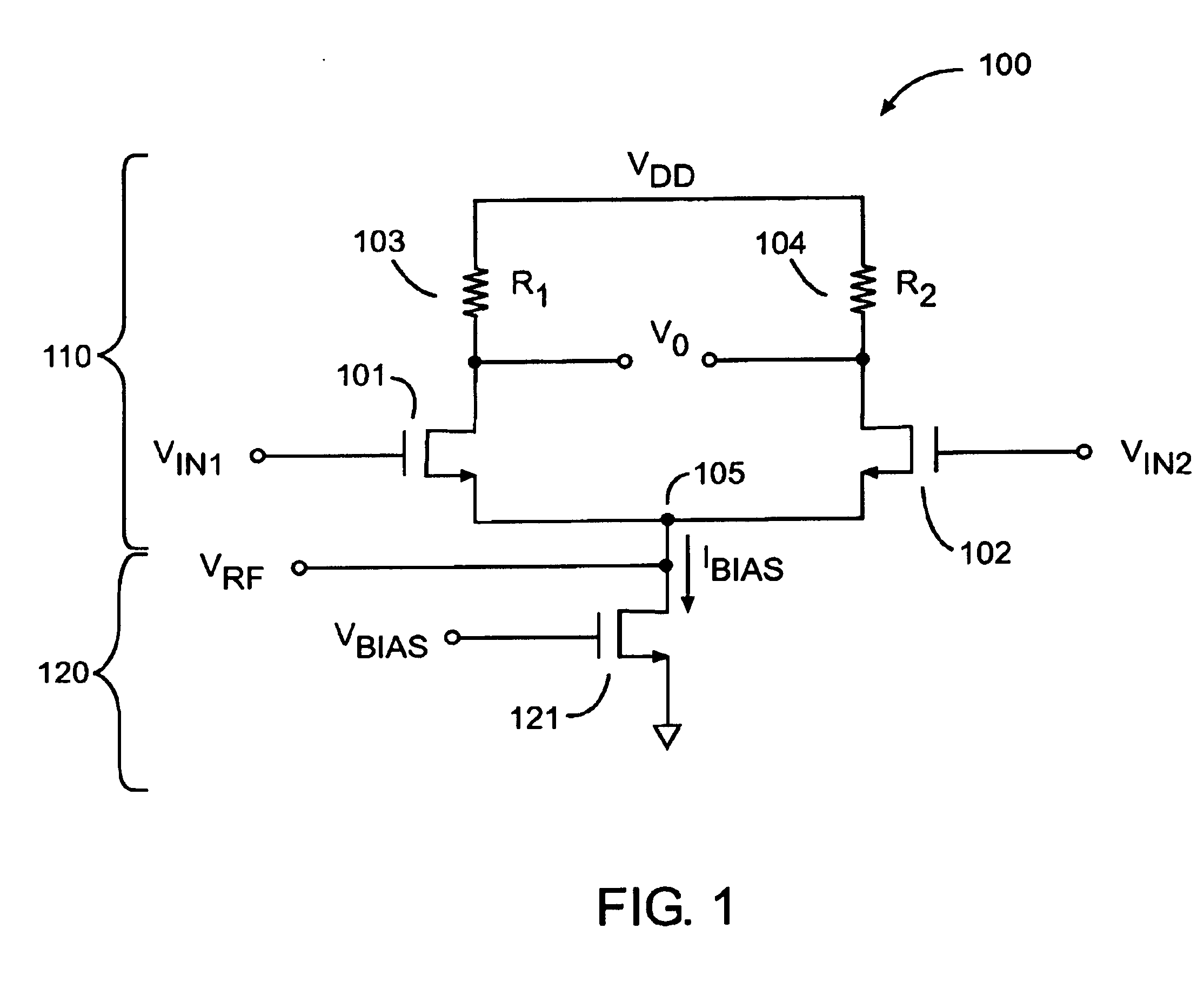Low noise mixer circuit with improved gain
a low-noise, gain-enhancing technology, applied in the direction of oscillation generators, amplifiers with semiconductor devices/discharge tubes, transmission, etc., can solve the problems of affecting the quality of the signal, the signal input to the receiver may already be heavily distorted, and the transmission signal may be distorted
- Summary
- Abstract
- Description
- Claims
- Application Information
AI Technical Summary
Benefits of technology
Problems solved by technology
Method used
Image
Examples
Embodiment Construction
[0025]FIG. 2 illustrates a low noise mixer circuit 200 with enhanced gain according to one embodiment of the present invention. Mixer circuit 200 of FIG. 2 includes a gain stage 210, a bias circuit 220 and a shunt circuit 230. Gain stage 210 receives an input signal VA on input node 212 and produces an output signal Vout on output node 216. Additionally, gain stage 210 is powered by supply voltage Vdd received on supply terminal 214, which generates internal gain stage bias currents (not shown). The bias currents are used to set the gain of the internal devices of the gain stage and may, in turn, be coupled to common node 250.
[0026]Bias circuit 220 is coupled to common node 250 and to a second supply voltage VSS. Bias circuit 220 also receives an input signal VB on input line 222 to produce a bias current Ibias. Bias current Ibias is then coupled to common node 250 which is coupled to gain stage 210. Input signal VB may include both AC and DC frequency components. For example, the i...
PUM
 Login to View More
Login to View More Abstract
Description
Claims
Application Information
 Login to View More
Login to View More - R&D
- Intellectual Property
- Life Sciences
- Materials
- Tech Scout
- Unparalleled Data Quality
- Higher Quality Content
- 60% Fewer Hallucinations
Browse by: Latest US Patents, China's latest patents, Technical Efficacy Thesaurus, Application Domain, Technology Topic, Popular Technical Reports.
© 2025 PatSnap. All rights reserved.Legal|Privacy policy|Modern Slavery Act Transparency Statement|Sitemap|About US| Contact US: help@patsnap.com



